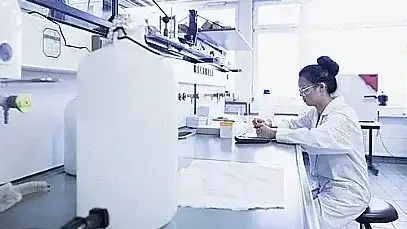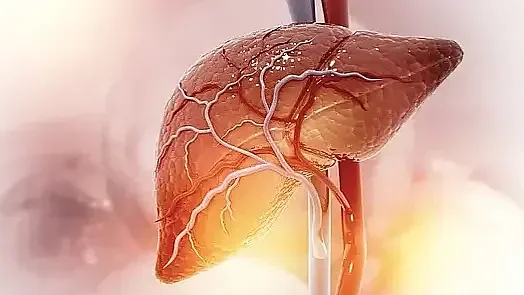How a High-Fiber Diet Helps Reverse Fatty Liver

A Nutritional Approach to Combat Liver Disease
Fatty liver disease, encompassing non-alcoholic fatty liver disease (NAFLD) and its more severe form, non-alcoholic steatohepatitis (NASH), has become increasingly prevalent worldwide. Among various therapeutic strategies, understanding how a high-fiber diet helps reverse fatty liver can provide significant insights into nutritional interventions for liver health. Fiber, particularly soluble fiber, plays a critical role in metabolic regulation and hepatic recovery.
The Connection Between Fiber and Liver Health
Understanding Fatty Liver Disease
Fatty liver disease occurs when excess fat accumulates in liver cells, impairing their function. NAFLD is closely associated with metabolic disorders such as obesity, insulin resistance, and type 2 diabetes. If left unmanaged, it can progress to NASH, cirrhosis, or even hepatocellular carcinoma.
Emerging research underscores the importance of dietary factors in managing fatty liver. While calorie reduction and weight loss are primary goals, the quality of dietary intake—specifically, fiber consumption—has gained attention as a pivotal factor in liver recovery.
Types of Dietary Fiber
Dietary fiber is classified into two types:
- Soluble Fiber: Found in foods like oats, fruits, legumes, and psyllium, soluble fiber dissolves in water to form a gel-like substance. This type is particularly effective in modulating lipid and glucose metabolism.
- Insoluble Fiber: Present in whole grains, vegetables, and nuts, insoluble fiber aids in bowel regularity but has limited direct effects on metabolic markers relevant to fatty liver.
Mechanisms of Action: How Fiber Supports Liver Recovery
Improved Lipid Metabolism
Soluble fiber helps lower serum triglycerides and LDL cholesterol levels by binding to bile acids in the gut, promoting their excretion. The liver compensates by utilizing cholesterol to synthesize more bile acids, reducing hepatic fat storage. This mechanism directly impacts the lipid accumulation characteristic of fatty liver disease.
Regulation of Insulin Sensitivity
Insulin resistance is a hallmark of fatty liver. Soluble fiber slows carbohydrate absorption, mitigating postprandial glucose spikes and improving overall insulin sensitivity. Enhanced insulin function reduces de novo lipogenesis, the process by which excess carbohydrates are converted into fat in the liver.
Modulation of Gut Microbiota
The gut-liver axis plays a significant role in liver health. Soluble fiber acts as a prebiotic, fostering the growth of beneficial gut bacteria. These bacteria produce short-chain fatty acids (SCFAs) such as acetate, propionate, and butyrate, which have anti-inflammatory properties and improve liver function by reducing oxidative stress and inflammation.
Reduction in Systemic Inflammation
Chronic low-grade inflammation exacerbates liver damage in NAFLD and NASH. Fiber intake reduces the production of pro-inflammatory cytokines and lowers circulating endotoxins by maintaining gut integrity. This anti-inflammatory effect is critical in reversing liver damage.
Dietary Recommendations: Incorporating Fiber for Liver Health
Recommended Daily Intake
The American Heart Association recommends a daily fiber intake of 25 grams for women and 38 grams for men. For individuals with fatty liver disease, focusing on soluble fiber sources is especially beneficial. For more detailed dietary guidelines, you can refer to Medical News Today, which discusses foods to eat and avoid for fatty liver management.
High-Fiber Foods to Include
- Fruits: Apples, oranges, pears, and berries provide soluble fiber and antioxidants.
- Vegetables: Broccoli, carrots, and Brussels sprouts are rich in fiber and phytonutrients.
- Legumes: Lentils, chickpeas, and black beans are excellent sources of soluble fiber and plant-based protein.
- Whole Grains: Oats, barley, and quinoa deliver soluble fiber while supporting glycemic control.
- Nuts and Seeds: Flaxseeds and chia seeds are high in fiber and omega-3 fatty acids, which have anti-inflammatory effects.
Clinical Evidence Supporting Fiber’s Role in Liver Recovery
Weight Loss and Caloric Control
Fiber-rich diets promote satiety, aiding in weight management—a cornerstone of NAFLD treatment. Studies have demonstrated that individuals who consume higher fiber levels experience greater reductions in liver fat, independent of total caloric intake.
Improvements in Liver Enzymes
Elevated levels of alanine aminotransferase (ALT) and aspartate aminotransferase (AST) are markers of liver damage. Research indicates that increasing dietary fiber can lower these enzymes, signifying reduced hepatic stress.
Gut Microbiome and SCFA Production
A clinical trial published in Hepatology found that patients with NAFLD who consumed a high-fiber diet exhibited increased SCFA production and reduced markers of oxidative stress. This underscores the therapeutic potential of fiber in modulating the gut-liver axis.
Practical Strategies for Increasing Fiber Intake
Start Gradually
Sudden increases in fiber can cause gastrointestinal discomfort. Begin by incorporating one additional high-fiber food per meal and gradually increase intake over several weeks.
Hydration is Key
Adequate water intake is essential to prevent constipation when consuming a high-fiber diet. Aim for at least 8-10 cups of water daily.
Choose Whole Foods Over Supplements
While fiber supplements like psyllium can be beneficial, whole foods provide additional nutrients and phytochemicals that enhance overall health.
Plan Balanced Meals
Combine fiber-rich foods with lean protein and healthy fats to create balanced meals that support liver health. For example, a salad with leafy greens, quinoa, avocado, and chickpeas offers a nutrient-dense, high-fiber option.
Challenges and Considerations
Individual Variability
Responses to dietary fiber may vary based on factors such as age, gender, baseline health, and genetic predisposition. Consulting a healthcare provider or registered dietitian can help tailor dietary strategies to individual needs.
Medical Conditions
Certain gastrointestinal disorders, such as irritable bowel syndrome (IBS), may require modifications to fiber intake. Soluble fiber is generally better tolerated than insoluble fiber in these cases.
Conclusion: Fiber as a Cornerstone of Liver Health
Understanding how a high-fiber diet helps reverse fatty liver underscores the importance of dietary strategies in managing chronic liver conditions. By improving lipid metabolism, enhancing insulin sensitivity, modulating the gut microbiota, and reducing systemic inflammation, fiber emerges as a key component of a comprehensive approach to liver health. Integrating fiber-rich foods into daily meals can support both metabolic and hepatic recovery, offering a practical, evidence-based intervention for individuals with fatty liver disease.
Share this article

Dr. Irene Paragas, MD
I am a Medical Doctor, Registered Nutritionist-Dietitian, and seasoned virtual professional. See Full Bio.
-
1. Solà E, Solé C, Simó R, Ginès P. Role of gut-liver axis in the pathogenesis of liver diseases. Clin Gastroenterol Hepatol, 2020.
-
2. Chalasani N, Younossi Z, Lavine JE, Charlton M, Cusi K, Rinella M, Harrison SA, Brunt EM, Sanyal AJ. The diagnosis and management of NAFLD: Practice guidance from AASLD. Hepatology, 2018.
-
3. Zhu L, Baker SS, Gill C, Liu W, Alkhouri R, Baker RD, et al. Characterization of gut microbiomes in nonalcoholic steatohepatitis (NASH) patients: a connection to gut-liver axis. Hepatology, 2013.
-
4. Wang DD, Hu FB. Dietary fat and risk of cardiovascular disease: recent controversies and advances. Annu Rev Nutr, 2017.
-
5. Rodriguez-Martinez A, Gonzalez-Sanchez E, Martinez-Lopez N. Dietary Fiber and Gut Microbiota in Non-alcoholic Fatty Liver Disease. Nature Reviews Gastroenterology & Hepatology, 2024.
-
6. Wilkins T, Tadros M, Hays P, et al. Dietary Interventions in Nonalcoholic Fatty Liver Disease. American Family Physician, 2023.
-
7. Kim MS, Lee J, Ha J. Role of Dietary Fiber in Prevention and Treatment of Nonalcoholic Fatty Liver Disease. Hepatology, 2023.
-
8. Singh R, Kumar P, Macho M. Mechanisms of Fiber-induced Improvements in Hepatic Steatosis. Gastroenterology, 2024.
Weight Loss Calculator Weight loss is one of the most effective strategies for improving liver health, especially for those dealing with fatty liver disease.
Weight Loss Quiz for Fatty Liver Weight loss is a cornerstone in managing nonalcoholic fatty liver disease (NAFLD), a condition affecting millions worldwide.
Exercise and Calories Burned Calculator Managing non-alcoholic fatty liver disease (NAFLD) or similar liver conditions requires a multifaceted approach.

You might enjoy more articles by
Dr. Irene Paragas, MD
 Disease
Disease Diets
Diets Recipes
Recipes Supplements
Supplements Management
Management Calculators
Calculators Quizzes
Quizzes Glossary
Glossary
























